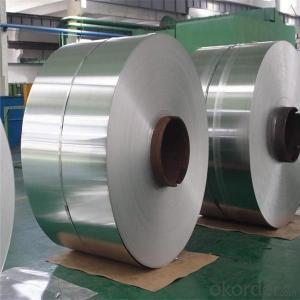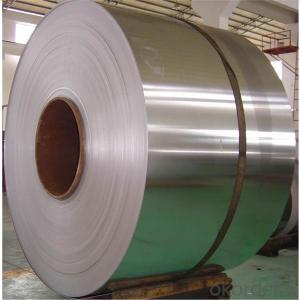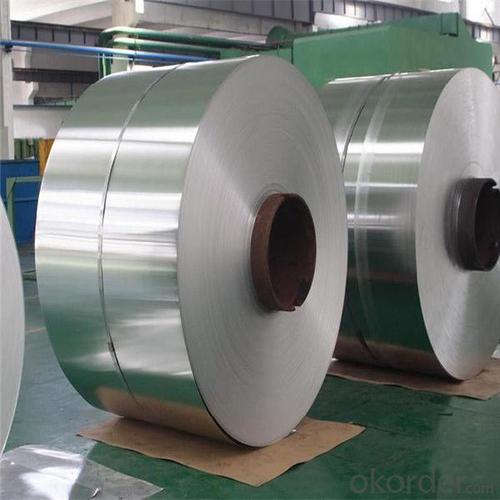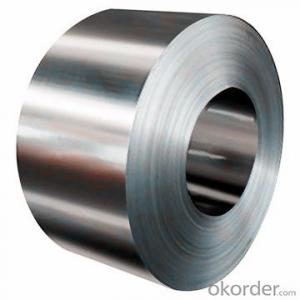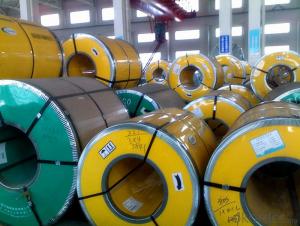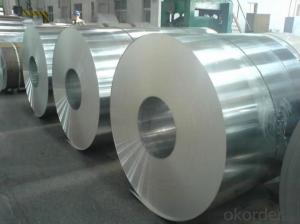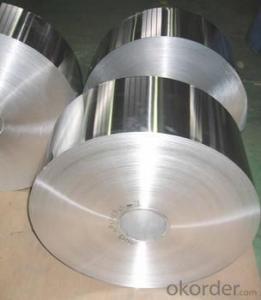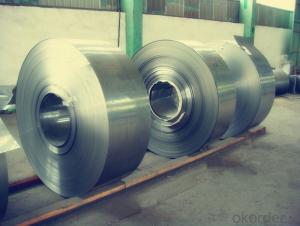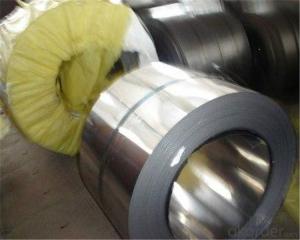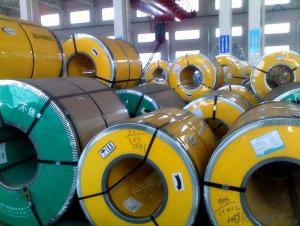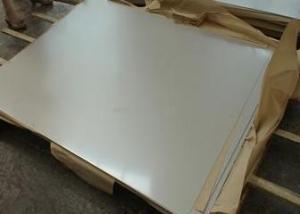201/304/430/ Stainless Steel Coil with good quality
- Loading Port:
- Shanghai
- Payment Terms:
- TT OR LC
- Min Order Qty:
- 5 m.t.
- Supply Capability:
- 24000 m.t./month
OKorder Service Pledge
OKorder Financial Service
You Might Also Like
Specification
stainless steel coil
1. Standard: ASTM A240, JIS G4304, G4305, GB/T 4237, GB/T 8165, BS 1449, DIN17460, DIN 17441
2. Grade: 200series&300series&400series
3. Thickness: 0.23mm-0.8mm
4. Diameter: 115-560mm
5. Length: according buyer require
6. Surface finish: 2B, BA, 8K, 6K, Mirror Finished, No1, No2, No4, Hair Line with PVC
7. Manufacture technology: cold drawn/cold rolled/hot rolled
1.Export Markets
Our target market is the international market. Every year we export most of products to countries like India, Pakistan, South Korea, Brazil, Australia, South Africa, Spain, Sri Lanka, russia,vietnam,Taiwan, Hong Kong, etc.
Type | Stainless steel coil (cold rolled ) |
Thinckness | 0.23mm-0.8mm |
Diameter | 115mm-560mm |
Quantity | as customer's requirement |
Finish | 2B,BA,HL,MIRROR,NO.1-NO.4,8K,and so on. |
Standard | ASME, ASTM, EN ,BS,GB,DIN, JIS etc |
Material | 201,202, 301,304,410,430,409 |
Application range | Foodstuff, Gas, metallurgy, biology, electron, chemical, petroleum, boiler, nuclear energy, Medical equipment, fertilizer etc |
Package | Standard export sea-worthy packing |
Delivery time | 7-15 days |
Quality | No.1 |
Productivity | 3000-4000 tons/month |
Note | We can produce other standard as the customers’ requirement |
2.Technical notes:
Surface Finish | Definition | Application |
2B | Those finished, after cold rolling, by heat treatment, pickling or other equivalent treatment and lastly by cold rolling to given appropriate luster. | Medical equipment, Food industry, Construction material, Kitchen utensils. |
BA | Those processed with bright heat treatment after cold rolling. | Kitchen utensils, Electric equipment, Building construction. |
NO.3 | Those finished by polishing with No.100 to No.120 abrasives specified in JIS R6001. | Kitchen utensils, Building construction. |
NO.4 | Those finished by polishing with No.150 to No.180 abrasives specified in JIS R6001. | Kitchen utensils, Building construction, Medical equipment. |
HL | Those finished polishing so as to give continuous polishing streaks by using abrasive of suitable grain size. | Building Construction. |
NO.1 | The surface finished by heat treatment and pickling or processes corresponding there to after hot rolling. | Chemical tank, pipe |
3.chemcial composition
Quality | Copper | NI | CU | Application |
PURE DDQ
| High | 1% | 1.4% | Sink, Deep drawing product |
DDQ | Middle | 1% | 1% | Pot, Bowl |
non-DDQ | Low | 0.5% | 0.5% | Plate, Bowl |
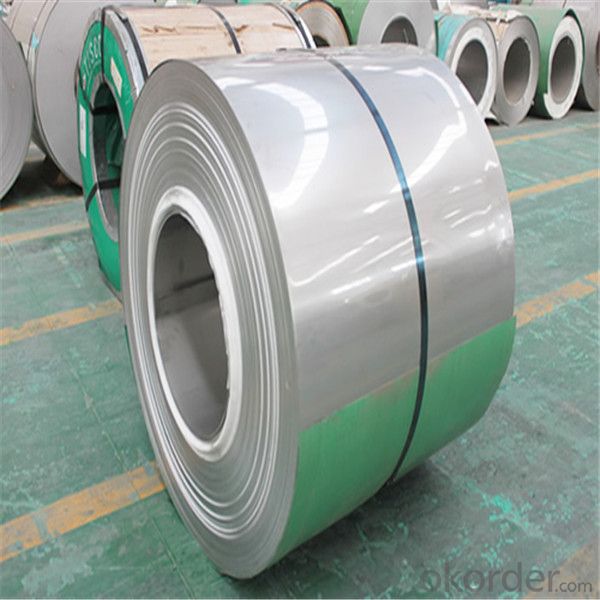
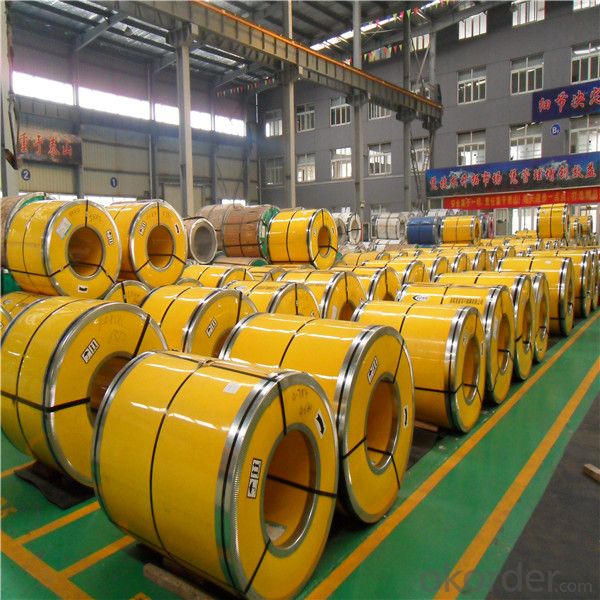
- Q: What are the common uses of stainless steel strips in the construction industry?
- Stainless steel strips are commonly used in the construction industry for various applications such as cladding, roofing, structural supports, and decorative elements. They provide durability, corrosion resistance, and aesthetic appeal, making them an ideal choice for exterior and interior design purposes. Additionally, stainless steel strips can be easily fabricated, bent, and welded, enabling their use in a wide range of construction projects.
- Q: What is the difference between hot rolled and cold rolled stainless steel strips?
- Hot rolled stainless steel strips are produced by passing the steel through a set of rollers at a high temperature, typically above 1,000 degrees Celsius. This process makes the steel more malleable and easier to form into various shapes. Hot rolled strips typically have a rough surface finish and can have a slightly rounded edge. On the other hand, cold rolled stainless steel strips are produced by passing the steel through a set of rollers at room temperature or slightly below. This process helps to improve the surface finish and dimensional accuracy of the strips. Cold rolled strips have a smoother surface finish and sharper edges compared to hot rolled strips. Another key difference between hot rolled and cold rolled stainless steel strips is the mechanical properties. Hot rolled strips tend to have a higher yield strength and are generally more ductile, making them suitable for applications that require shaping or bending. Cold rolled strips, on the other hand, have a higher tensile strength and are generally harder, making them ideal for applications that require strength and durability. In terms of cost, hot rolled stainless steel strips are generally cheaper to produce compared to cold rolled strips. However, due to the additional processing steps involved in cold rolling, the cost of cold rolled strips is often higher. Overall, the choice between hot rolled and cold rolled stainless steel strips depends on the specific requirements of the application. Hot rolled strips are suitable for applications where shaping or bending is necessary, while cold rolled strips are preferred for applications that require strength and a smooth surface finish.
- Q: What are the common chemical compositions of stainless steel strips?
- The common chemical compositions of stainless steel strips typically include iron, chromium, nickel, and sometimes other elements such as carbon, manganese, and molybdenum.
- Q: Are stainless steel strips resistant to stress corrosion cracking?
- Yes, stainless steel strips are generally resistant to stress corrosion cracking due to their high levels of chromium and nickel content, which form a protective oxide layer on the surface, preventing the penetration of corrosive agents.
- Q: Are stainless steel strips suitable for water treatment plants?
- Yes, stainless steel strips are suitable for water treatment plants. Stainless steel is highly resistant to corrosion and can withstand the harsh conditions and chemicals present in water treatment processes. It offers excellent durability, hygiene, and long-term performance, making it an ideal material for various applications in water treatment plants.
- Q: What is the impact resistance of stainless steel strips?
- Stainless steel strips have excellent impact resistance due to their inherent properties and unique manufacturing process. The impact resistance of stainless steel strips is primarily attributed to their high tensile strength and toughness. Stainless steel is an alloy composed of iron, chromium, and other elements such as nickel, molybdenum, and manganese. These elements provide stainless steel with enhanced mechanical properties, including high strength and ductility. These properties allow stainless steel strips to withstand external forces and impacts without deforming or breaking easily. Moreover, stainless steel strips undergo a process called cold rolling during their manufacturing. Cold rolling involves passing the stainless steel through a series of rollers at a low temperature, which increases its strength and hardness. This process further enhances the impact resistance of stainless steel strips. The impact resistance of stainless steel strips makes them suitable for various applications that require durability and resistance to external forces. They are commonly used in industries such as automotive, construction, aerospace, and marine, where they are exposed to harsh conditions and potential impacts. In conclusion, stainless steel strips exhibit excellent impact resistance due to their high tensile strength, toughness, and the cold rolling process they undergo during manufacture. These properties make stainless steel strips a reliable choice for applications that require resistance to external forces and impacts.
- Q: What is the corrosion resistance of stainless steel strips in saltwater?
- In saltwater environments, stainless steel strips exhibit exceptional resistance against corrosion. The presence of a substantial amount of chromium in stainless steel results in the formation of a protective layer of chromium oxide on the surface. This layer acts as a barricade against corrosion and prevents any chemical reaction between the metal and saltwater. Consequently, stainless steel strips possess remarkable resistance to rust and corrosion caused by exposure to saltwater. Moreover, stainless steel is highly resistant to pitting corrosion, a prevalent form of corrosion in saltwater environments. Hence, stainless steel strips find extensive application in marine sectors, such as shipbuilding and offshore structures, where they encounter saltwater conditions.
- Q: Can stainless steel strips be used for solar panel frames?
- Solar panel frames can indeed utilize stainless steel strips. The use of stainless steel is renowned due to its remarkable resistance to corrosion and its durable nature, rendering it an ideal substance for outdoor purposes like solar panels. By employing stainless steel frames, the solar panels are provided with structural reinforcement, guaranteeing their stability and security. Moreover, stainless steel possesses a lightweight quality, facilitating the effortless installation and transportation of the panels. Its capability to endure severe weather conditions, encompassing rain, snow, and UV radiation, establishes stainless steel as a dependable selection for solar panel frames.
- Q: Stainless steel pan with magnetic or good without magnetic stainless steel pot?
- Good with magnetic and without magnetism. See what you like.
- Q: Can 111 stainless steel strips be used in the aerospace industry?
- Yes, 111 stainless steel strips can be used in the aerospace industry.
Send your message to us
201/304/430/ Stainless Steel Coil with good quality
- Loading Port:
- Shanghai
- Payment Terms:
- TT OR LC
- Min Order Qty:
- 5 m.t.
- Supply Capability:
- 24000 m.t./month
OKorder Service Pledge
OKorder Financial Service
Similar products
Hot products
Hot Searches
Related keywords
